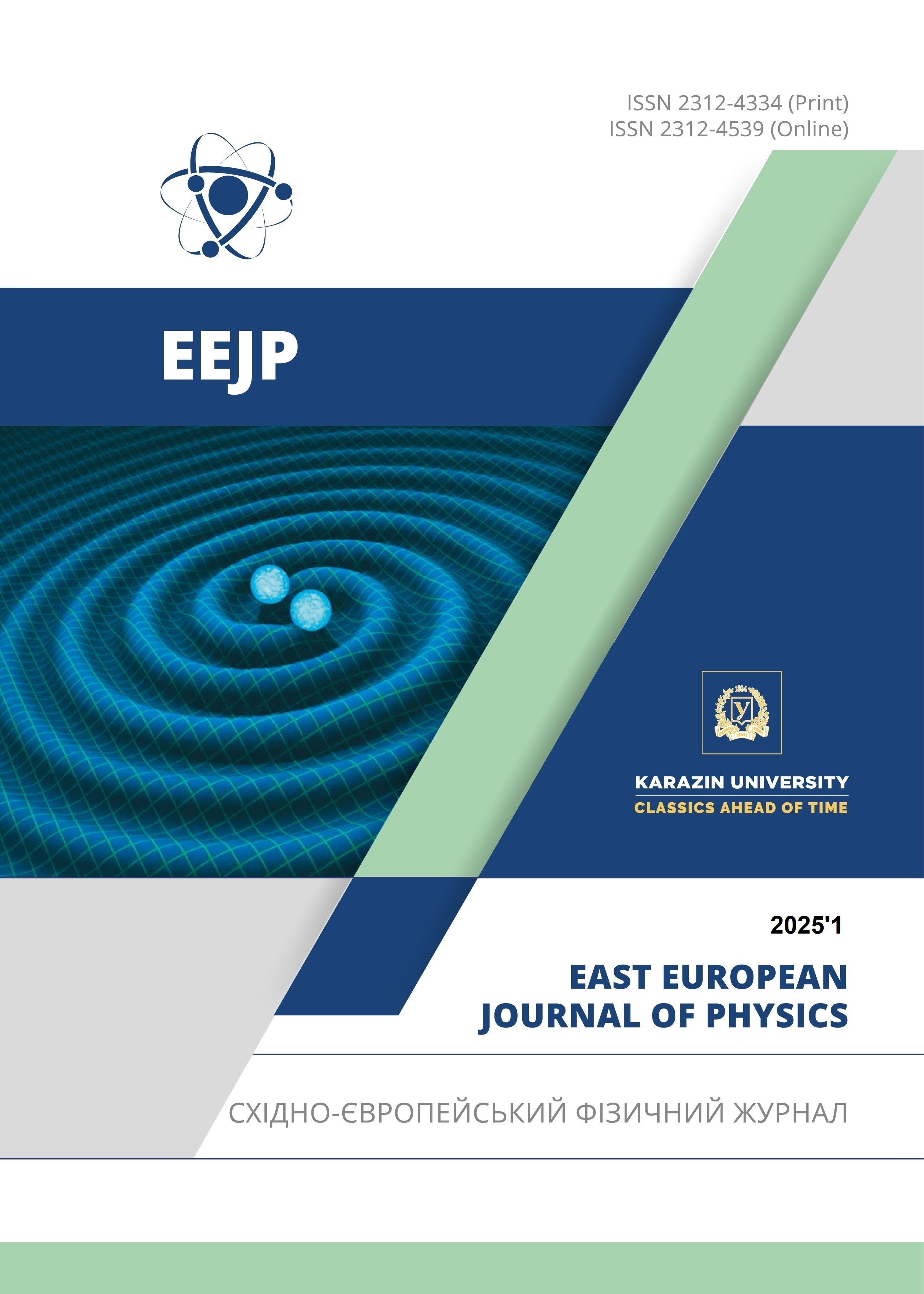On the Influence of Vacuum Conditions on The Power Level of Electromagnetic Waves Generated by A Relativistic Magnetron
Abstract
The high-power microwave radiation, generated in a relativistic high-voltage pulsed magnetron with the range of 8 mm, was experimentally investigated. The factors that negatively affect the generation of microwave radiation were experimentally studied and analyzed. It was determined that the low pressure in the vacuum diode of the magnetron also was associated with the processes reducing the efficiency and duration of the pulse generation. The air components are known to be the major residual gases in the magnetron vacuum diode. During the magnetron operation, a significant increase in the pressure of the residual atmosphere of hydrocarbons, water vapor, and hydrogen is to be observed. A vacuum system was composed to pump them out, thus ensuring the magnetron optimal operation. A cryogenic condensation-adsorption pump was developed and applied for the new vacuum system allowing to increase the evacuation rate of the main residual gases. The peculiarity of the developed pump is that the pumping element with the adsorbent has a double working surface due to the use of a corrugated form of the sorption cartridge. Another feature of the pump is its efficiency, which is achieved due to the use of nitrogen vapors for cooling the space between the walls. Due to the use of the cryogenic means of pumping, it became possible to obtain the pressure at the level of 1·10-6 Torr, thus achieving an increase in the microwave radiation of the relativistic magnetron by 25 percent.
Downloads
References
R.J. Barker, and E. Schamiloglu, editors, High Power Microwave Sources and Technologies, (New York: Wiley-IEEE Press, 2001).
T. Nakamura, et al., “Output Evaluation of Microwave Pulse Emitted from Axially-Extracted Vircator with Resonance Cavity,” in: Recent developments of pulsed power technology and plasma application research, edited by J. Hasegawa, and O. Tetsuo, (Tokyo Institute of Technology, Tokyo, Japan, 2018), p. 55-60
N.P. Gadetski, E.I. Kravtsova, I.I. Magda, V.D. Naumenko, S.S. Pushkaryov, S.N. Terekhin, and A.S. Tischenko, “Relativistic magnetron of 8 mm waveband,” Problems of Atomic Science and Technology, Series “Plasma Electronics”, (4), 18-20 (2008).
A. Kuskov, A. Elfrgani, and E. Schamiloglu, “Relativistic magnetron with diffraction output (MDO) with a permanent magnet anode block configuration,” in: IEEE International Vacuum Electronics Conference (IVEC), 2018.
S. Xu, L. Lei, F. Qin, and D. Wang, “Compact, high power and high efficiency relativistic magnetron with L-band all cavity axial extraction,” Physics of Plasmas, 8, 22-29 (2018). https://doi.org/10.1063/1.5041860
N.P. Gadetsky, A.N. Lebedenko, I.I. Magda, O.G. Melezhik, A.A. Shtanko, and M.V. Volovenko, “A relativistic magnetron-type source of nanosecond-length pulsed radiation in the 8 mm waveband,” Problems of Atomic Science and Technology, Series “Plasma Electronics”, (6), 40-42 (2017). https://vant.kipt.kharkov.ua/ARTICLE/VANT_2017_6/article_2017_6_40.pdf
A. Sayapin, and A. Shlapakovski, “Transient operation of the relativistic S-band magnetron with radial output,” Journal of Applied Physics, (6), 61-67 (2011). https://doi.org/10.1063/1.3553839
N.P. Gadetski, V.G. Korenev, A.N. Lebedenko, I.I. Magda, O.G. Melezhik, V.G. Sinitsin, A.A. Shtanko, and N.V. Volovenko. “Millimeter-wavelength relativistic magnetron: problems of microwave power extraction,” Problems of Atomic Science and Technology, Series: Nuclear Physical Investigations, (6), 80-84 (2021). https://vant.kipt.kharkov.ua/ARTICLE/VANT_2021_6/article_2021_6_80.pdf
V.А. Markov, and V.D. Naumenko, “On the influence of the shape of anode voltage pulse on the operation stability of spatial-harmonic magnetron with cold secondary emission cathode,” Radiofiz. elektron. 23(1), 53-60 (2018). https://doi.org/10.15407/rej2018.01.053
E.S. Borovik, and B.P. Batrakov, “Study of breakdown in vacuum,” Journal of Technical Physics, 28(9), (1958). (in Russian)
А.B. Batrakov, V.А. Kravchenko, et al., “Cryogenic adsorption pumps for obtaining pure vacuum,” in: Kharkiv Scientific Assembly ICVTE-6, 2003, p. 226-228.
A.B. Batrakov, Yu.N. Volkov, Yu.F. Lonin, and A.G. Ponomaryov, “Neon cryovaccuum system for life testing of electric jet,” Problems of Atomic Science and Technology. Series “Plasma Physics”, (1), 213-215 (2015). https://vant.kipt.kharkov.ua/ARTICLE/VANT_2015_1/article_2015_1_213.pdf
Copyright (c) 2025 A.B. Batrakov, S.I. Fedotov, O.М. Lebedenko, I.N. Onishchenko, O.L. Rak, M.V. Volovenko, Yu.N. Volkov

This work is licensed under a Creative Commons Attribution 4.0 International License.
Authors who publish with this journal agree to the following terms:
- Authors retain copyright and grant the journal right of first publication with the work simultaneously licensed under a Creative Commons Attribution License that allows others to share the work with an acknowledgment of the work's authorship and initial publication in this journal.
- Authors are able to enter into separate, additional contractual arrangements for the non-exclusive distribution of the journal's published version of the work (e.g., post it to an institutional repository or publish it in a book), with an acknowledgment of its initial publication in this journal.
- Authors are permitted and encouraged to post their work online (e.g., in institutional repositories or on their website) prior to and during the submission process, as it can lead to productive exchanges, as well as earlier and greater citation of published work (See The Effect of Open Access).








